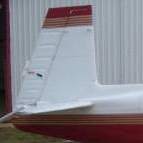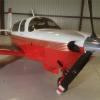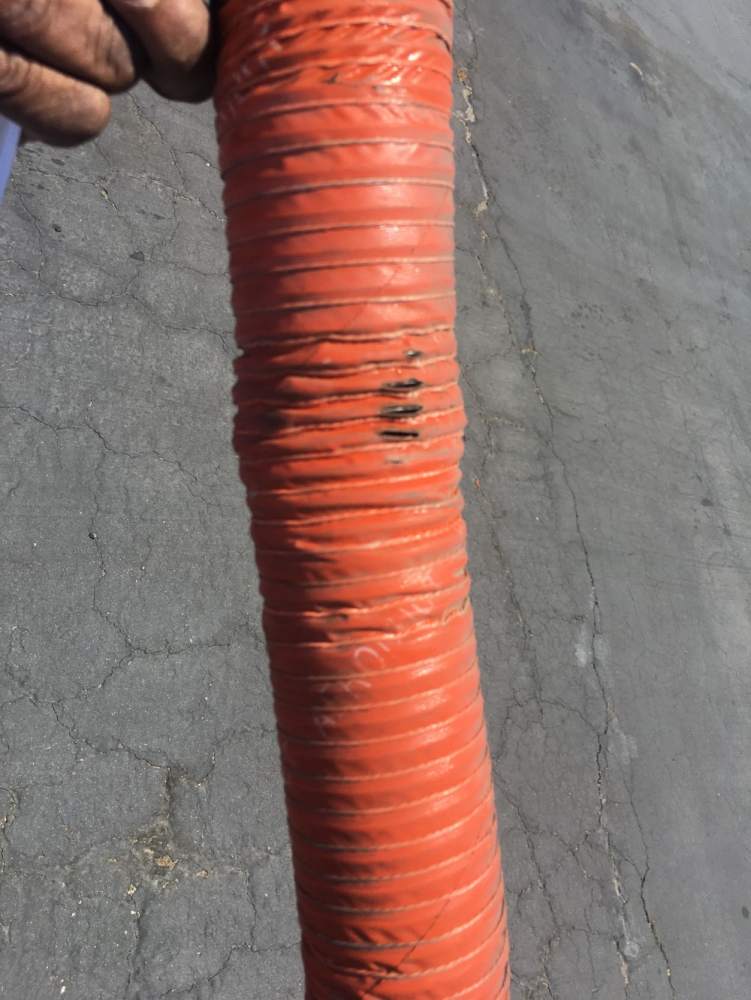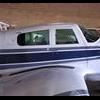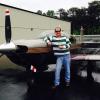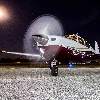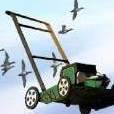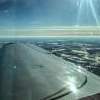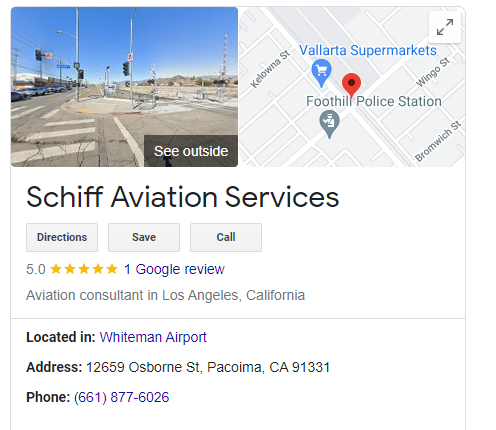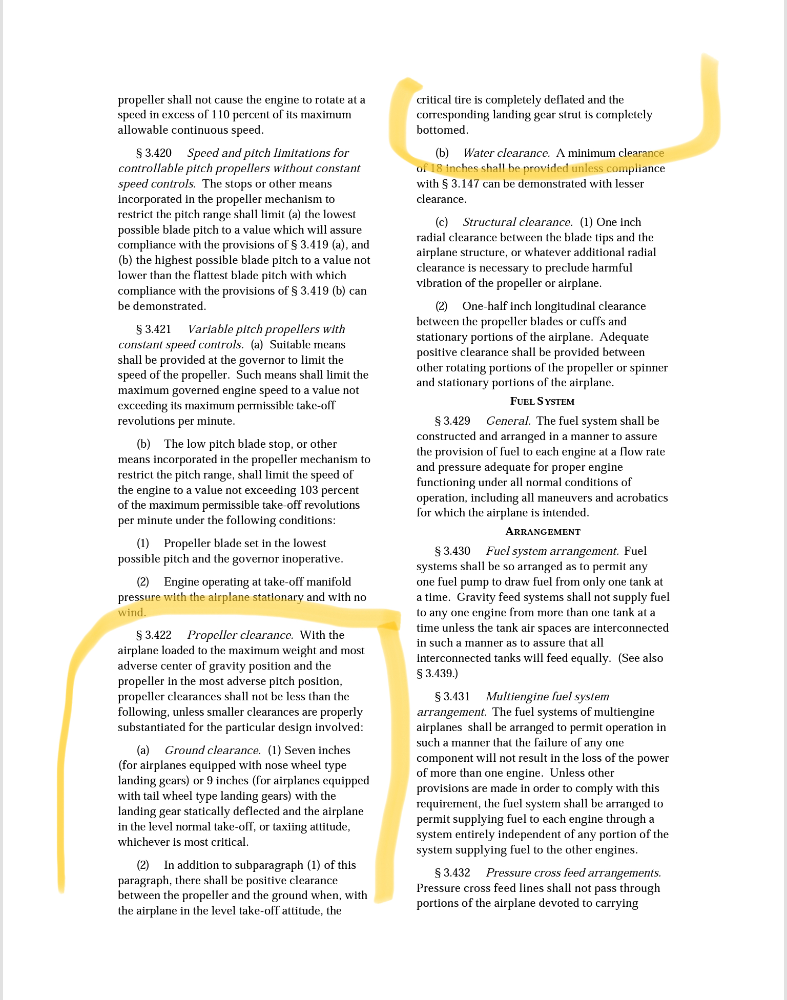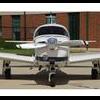Leaderboard
Popular Content
Showing content with the highest reputation on 07/28/2022 in all areas
-
Update: I contacted my insurance carrier, and the adjustor actually recommended that I file a Claim on my insurance. The adjustor said that they have a "history" with this FBO, where the FBO's insurance company will not admit liability (even in the most obvious cases of sole liability) until they do a very lengthy "investigation" of the incident. This has resulted in major delays in getting damaged aircraft repaired. He authorized me to have the aircraft inspected, which I plan to do at the maintenance facility on the field. Repairs can be done locally or at a MSC. My carrier will then Subrogate the loss against the FBO, to help them find their checkbook sooner than later.6 points
-
Allright update! I have learned so much about CO in the cockpit in the last 2 weeks. First, from Lycoming, slip joint leaks are common, particularly with new engines as the seals typically fill with gunk over time which seals the slip joints. So further investigation was required. Thanks to Al at Air San Luis in San Luis Obispo Airport, he was able to find the leak in one of my heater hoses and replaced. (See attached photo) Now no CO in my cockpit! Huge thanks to lots of people including All of Mooneyspace, and some awesome lifelong friends!4 points
-
Eric, You should forward this to the FAA comment website for the AD. I would think the AD could just say, "If the clamp is rusty and obviously overheated, replace it" All the examples looked overheated or over torqued or both.3 points
-
We checked continuity from coax outer to each element. One was zero. Pulled antenna and discovered broken #4 bolt that goes from eyelet, through Bakelite, to element. Started to remove unit, balun, and coax, but decided that was a bad move and that unit could be repaired with it just pulled up and out. Had to remove a few cable constraints at bottom to get some extra coax length. Tied a rope on to be sure not to loose end but did not have to go that far. Replaced broken bolt and lock nuts, inspected balun and assembly, dielectric grease on electrical connections and Anti Seize on mounting bolts, checked continuity, and put it back together. Flight tested fine. Diagram of cable assembly presented here was the key and extremely helpful. Thanks. Balun was tucked into space at top of fin above antenna and went back in easily. Removing two mounting bolts without messing up coax was futzy but doable with care and box/open end wrench. Airframe ground at bottom of balun went to the front mounting bolt. Might be best to tape on a towel or paper to avoid dangling parts scratching fin paint.3 points
-
Finally replaced the 50 year old VOR/GS antenna and took her out today - she is singing loudly now! VOR, LOC/GS finally working consistently. Flew my first ILS with my instructor and was very happy with the performance. Lots of IFR practice going on and I'm planning a check ride by end of September. Fingers crossed. Plane has been flying well and all Avionics working great... -Don3 points
-
I just got my quote for next year. My premium increased $470/year. My agent tells me that when I turn 75, next year, he probably will not be able to find an underwriter willing to take on my Mooney on our grass runway. He suggested selling. I have sold my Mooney and will be selling my experimental biplane as well. Certainly, I can afford it, but the cost per hour does not compute and there are activities outside of aviation that are just as rewarding. 33,000 hours is enough time to sit in a cockpit. I'm done.2 points
-
Cole Aviation is not that far away. If it were me, I would call Joe to determine the best way of getting the plane to his shop so that the inspection and repairs can be done correctly. In my opinion, having the repairs done properly at a respected MSC will also help the provenance of the aircraft after an incident like this. Joe is a pilot, and he also sometimes travels to AOG aircraft.2 points
-
Which is why Mike started Savvy to help people get what is needed done, without paying for things that don't need to be done.2 points
-
There is no steel cage under the cowling. And the gear components would have taken the majority of the force as the wheel is the only ground contact point.2 points
-
Problem is fixed. It was either the fuel selector or the gascolator. On close inspection there was some slight blue fuel staining on the top of the gascolator bowl (shaw aero 1540-3), so a new o-ring kit was installed. The top of the fuel selector shaft looked pretty worn, but we ended up reinstalling for a ground run after the gascolator o-rings were installed and fuel pressure was good. Next flight, climbed to 8000ft and left the mixture rich. We saw about a 2 needle-width drop (to ~20 PSI), but assumed that was ok given the excessively rich mixture. Performed fine throughout the rest of the flight including go arounds. Noticed a few drops of fuel coming from the sniffle valve drain line (sump breather line) after the flight which I had never noticed before, but I assume that is unrelated and not a problem (normal fuel injector draining?)2 points
-
Because Excel spreadsheet files are not acceptable on Mooneyspace now, email me at donkaye@earthlink.net for my Weight and Balance Spreadsheet. 2 people and full baggage should enable you to fly 4 hours with VFR reserves. I have a useful load of 985 pounds because I do not have TKS. You can play "what-if" scenarios with it. The critical attitude of the Bravo is over 21,000 Feet, so you should be able to climb full power to that altitude. Remember Vy decreases and Vx increase as you climb to altitude, where they eventually meet. I personally like to fly 2½ legs for myself and my passenger comfort. It does increase the total trip time. i have flown nonstop alone from San Jose to Colorado Springs. I have done the reverse nonstop, too. I did the flights at FL230 Eastbound and FL220 Westbound. Flying KGUC to KDEN I'd be flying the Monarch Pass personally for comfort, always before noon. If there is any convective weather stay on the ground, period, in any single engine airplane over the Rockies. Teaching the PPP Mountain Flying Class we've easily flown Aspen to Colorado Springs direct comfortably. Theres a large plateau between the Arkansas Valley an KCOS that is comfortable to fly over. I've also taken off from Leadville in the afternoon with full fuel and a DA in excess of 13,000 feet with no issue. Leadvile is marked at each quarter length and we were off within the 1,500 foot estimate ground roll. The best bargain out there is the Bravo in my opinion. I say that having flown and taught in all model Mooneys except the D and G extensively. You can check my credentials on my website at www.donkaye.com.2 points
-
Yes, I can see that there are jobs that may only have an estimate. But resealing tanks has been done a few times. And yes, if I get a contractor to work on my 60 year old house, they give me a written estimate and for anything over, I have to approve it. Yes, sometimes they estimate high to avoid having to stop and call. For this case, I would think an estimate of the "normal" work, with contingencies for common issues. Such as, work will cost X, but it is not unusual for us to find A and B, and if so, that will add Y and Z cost, and acceptance of this estimate includes approval for those issues if found. This is just good business.2 points
-
It seems that might be so in aviation All the car shops I have used called for approval before going over the estimate. And they also gave a written estimate..2 points
-
Of all the ways to hit a Mooney, this might be the least bad! I suspect the steel cage took the brunt of the side load, and you might not find any airframe damage beyond the cowl issues you noted. I would certainly get the cowl off, get it on jacks, swing the gear, etc and inspect thoroughly. Get the belly off while inspecting the gear system too. Look for rivet issues near the impact site as well. Good luck Sent from my LM-V405 using Tapatalk2 points
-
Just looking at the pictures of the failed one, they all look very corroded as if they had been in service for multiple decades with other exhaust issues going on. A key requirement of the Best Practices document is to perform an real inspection on these annually. If actually done, that alone should give these enough attention to cure the problem.2 points
-
2 points
-
Okay, I’ll bite. First, I’m a long time military pilot and CFI/II who owned a M20E and Bravo (with FIKI) and grew up flying in Colorado and I fly there regularly from Texas. What is your current experience and what are you flying? Do you have your Instrument rating? Do you plan on flying more than 100 hrs per year? I ask these questions to help us give you our best advice. If you plan on flying yourself and two pax + bags nonstop 700 nm, you can rule out Bravos. They just don’t have the useful load you need. Do you plan to fly to GUC all four seasons? You mentioned FIKI. If so, you’ll need a lot of training, and you’ll need a lot of latitude on when you’ll be able to make the trip, even with FIKI. As for capability, even though I fly for a living in lager, faster aircraft, I’m not going to fly the ILS RWY 06 hard IFR in the winter time in a Mooney. In a single engine piston, single pilot, that just exceeds my risk matrix. I’ve flown many times to KGUC for skiing and in the summer, and I adjust my times so that I arrive/depart Day VMC. If you’re just going to make leisure trips vs for work, it will take away a lot of the pressure to “make it happen” or “get-there-it is.” I’m glad you’re asking questions here and doing your research. All I ask is you invest in yourself before you invest in a high performance piston. PM me if you’d like to chat more as Mooney’s and Colorado are two of my favorite topics! Sent from my iPad using Tapatalk2 points
-
Sounds like you have low transmit power since it works fine nearby by not in the distance and you seem to be able to receive OK. It's probably not the antenna since each radio should have it's own antenna and the chances of two being bad are low. It could be caused by something in the airplane causing interference. Try turning off all the other nav and com radios and see if it has an effect. It might also be caused by low voltage if the older radios have linear power supplies. Skip2 points
-
Why do we even need iPads in todays age. We are totally getting ripped off by these avionics manufactures to have the expensive options we have to view a panel mount moving map with sectional. I find it so comical to see a 50k-100k panel and then iPad mounts all over the place blocking crap. At work we have just retrofitted the fleet with hundreds of thousands spent on a panel and we still need an iPad.... We should be able to upload our avionics nav database and flight plan up to the plane with our phone. Then just use a reasonable priced panel mount with a moving map sectional. Crazy that it has to cost what it does for a certified airplane. And no the G3x is not reasonably priced.. And a sectional is still the way to go in my opinion. Not enough detail in all those other "aviation" maps and layers that are out there. Rant over....2 points
-
There isn’t even a need to deal with or wait for the FBO’s insurance. Your insurance will make you whole fixing it to your satisfaction and then subrogate the FBO. Just get in touch with your insurance company and adjuster. Sent from my iPhone using Tapatalk2 points
-
Thanks everyone for the feedback. I now realize the need to put my insurance company on notice. When you are an Old Geezer, as I am, you want to keep a low profile with your insurance company, but they do need to know about this.2 points
-
and tell your insurance company about it, they are better at dealing with third parties than you are. Don2 points
-
Update- by pressurizing the exhaust system, and applying soapy water to detect bubbles technique as suggested by the awesome Don Maxwell, mechanic found the leaks, which were large amounts of CO leaking past my slip joints throughout my exhaust system. Since the exhaust and engine are nearly factory new, lycoming was contacted. I don’t actually know how high above 137 my ppm went, as I stopped looking at the monitors then and focused all of my concentration on landing. I am hugely grateful for having a monitor on board or I may have never known. If I can figure out how to upload the video, I will.2 points
-
Aluminum skin is actually very forgiving, dents can be “spooned” out, but it’s a time consuming process so too many dents for hail damage, but I’ve seen significant dents spooned out if you can get to the backside of the dent, done so well no body putty was needed. Actually over time a lot of hail dents just go away from the solar heating of the skin, they aren’t going to disappear, but often they do grow less dented. I’ve also seen dry ice used to some pretty good effect, I believe the theory is it shrinks the metal and pulls some of the dent out. Best answer for hail unfortunately is replacement of the skins, but I’ve seen some real artists with body putty too.1 point
-
Wow…. What an accomplishment…. Another way to look it is if you flew for 50 years that’s 660 hours a year, 55 hours a month, 13 hours a week or almost two hours a day, every single day for 50 years!1 point
-
1 point
-
When I started flying I flew a Tomahawk. I flew that thing all over AZ, southern CA, NV and NM. I thought it was a great airplane that would take you any where you wanted to go. When I moved to CO I started flying a Cutlass RG. I flew that plane all over the Rockies. I couldn’t go back to a T-Hawk after that. I needed my own plane, so I bought the M20F. It made the Cutlass look wimpy, I couldn't go back to it (unless the Mooney was down). Now I have a turbo and don’t want to go back. The moral of the story is, don’t buy a better plane, you will never go back.1 point
-
You don’t need to go to a Mooney specialist to install these senders. A competent mechanic can do it. You will want to replace your existing wiring with shielded wire. The majority of my time installing these senders was spent running the new wires and the time it took to calibrate the senders. As Anthony mentioned, your JPI will need to have the firmware required to support these senders. Also, JPI provides a harness to connect to the JPI. Again, nothing a mechanic can’t handle. Sent from my iPhone using Tapatalk Pro1 point
-
Any chance of checking them with someone far enough away while your engine , transponder, and other radio is off? You could eliminate most of the rmi sources and isolate the issue to the radio or to engine/alt/etc. Another option is to pull your field/VR CB and turn off most other stuff to see if that changes/helps. Isolate the problem to what’s causing it.1 point
-
Wow, I just thumbed through the best practices guide. The failure pictures look horrible. Those clamps should have been replaced years ago. It reminds me of the exhaust inspection on the turbo twin Cessna's. I do those periodically. the failure pictures that led to that AD also show horribly neglected exhaust systems.1 point
-
Oh crap. It's my bad English, I misunderstood you. I meant that most (if not all) dealerships and mechanics have given me estimates and they spontaneously contacted me in case anything went out of the initial diagnosis. Example: one independent mechanic told me the air flow sensor needed replacement when he first took a glance at the car, but then discovered that the other airflow sensor needed replacement too, so he sent me a concise text "U need 2nd AF sens. $400. Ok?" To which I said "cool". So the treatment I've received by default in the autoworld was on the good side.1 point
-
The general problem is that even some good car or airplane shops try to charge more than estimated without prior approval of the customer. Lot's of customers accept that without asking and pay. This teaches the shops that this kind of behavior may be ok. But it is not!!!!! There is work which is really difficult to estimate. Troubleshooting failures may take long but I believe that resealing a fuel tank for a company who is doing nothing else every day is not difficult to estimate and easy to set up a fixed price before the work starts. Sure additional work may be needed, but this is easy for the shop: Call the customer and get approval. The final bill should not be a dime over the estimate plus pre approved additional work. My experience in aviation is that good customer oriented shops give you an estimate and do not ask for more at the end. Others try to find reasons why it should cost more. As a customer we should say no! I had an A+P who most of the time was below his estimates because it took less time to fix things. Another company was different: They even tried to charge for work they never did: They charged extra for doing certain ADs which were not applicable for my airplane. I told the owner of the shop about that and he deducted it from the bill immediately. Another problem is if a large shop lets the non Mooney expert work on your plane, he may need way more time than the expert and at the end they want more money.1 point
-
I don't see specific requirements if you already have Rotorcraft Category rating what is required to add the Class rating. Just proficiency and a sign off for the test? From your first link - Upon successful completion of this, a logbook endorsement will allow you to operate within this category as a Gyroplane Sport Pilot. So that only applies to adding a Sport Pilot Gyroplane rating. If you want to do your PPL or CPL, you need to follow 61.69, which requires a checkride with a DPE The following ii if you already have a Rotocraft Category rating. Without a Rotorcraft rating, you need to meet the Aeronautical Experience requirements in 61.125. c) Additional aircraft class rating. A person who applies for an additional class rating on a pilot certificate: (1) Must have a logbook or training record endorsement from an authorized instructor attesting that the person was found competent in the appropriate aeronautical knowledge areas and proficient in the appropriate areas of operation. (2) Must pass the practical test. (3) Need not meet the specified training time requirements prescribed by this part that apply to the pilot certificate for the aircraft class rating sought; unless, the person only holds a lighter-than-air category rating with a balloon class rating and is seeking an airship class rating, then that person must receive the specified training time requirements and possess the appropriate aeronautical experience. (4) Need not take an additional knowledge test, provided the applicant holds an airplane, rotorcraft, powered-lift, weight-shift-control aircraft, powered parachute, or airship rating at that pilot certificate level.1 point
-
Lived in Denver and flew all over Colorado. I wouldn't even consider a na airplane for that mission. Any of the turbo mooneys will be fine. Had a 231 and it was fine. Had a rocket and it was finer. Had several sr22t and they were even finer. If you want to fly that route ifr reliably you want fiki. Acclaim. Bravo. Whatever fits the budget do it. Yeah you can make it work in a j or something but it'll just suck. I will say I prefer having two turbos over one. For reasons.1 point
-
1 point
-
Would that be like transformer oils with PCBs? I don’t think I ever swapped out a coil in 40 years of car ownership… I have only owned a few cars… and they 100 -200k miles before retiring… They must have designed them pretty well… Best regards, -a-1 point
-
You might post your own answer at the end… People will quickly register their thoughts… If you are familiar with worn steering horns and how they cause the 8 sec ride… aka bull ride. You can imagine how bent and broken parts can affect the ride…. Its highly unlikely anything got damaged beyond skin deep… But who would want to be the pilot to fly it somewhere to find out it was a bad decision to fly? Aviation is 9/10ths common sense… and 1/10th finding the guy with the right common sense…. Go MS! Best regards, -a-1 point
-
Given separate radios, feedline, and antennae but BOTH radios exhibit the issue, I'm with @PT20J thinking this points to low voltage. Do you have a voltmeter in the panel? If not, I'd try to hook one up as close to the radio(s) as you can, read the voltage during receive (should be at least 13.7 Volts with the engine running) and then when you transmit. If you see over a 1 volt drop, I would be concerned. (A KX155 needs 8.5 Amps at 13.75 to reach its rated 10Watt transmit power)1 point
-
Thanks @Bolter, I just signed a pre-purchase agreement and have 2 or 3 people in line to sign a PPA if this one should fail, so I'll refrain from further advertisement. I appreciate the thought though!1 point
-
Pretty sure it was here that I read about someone getting a free M20E. When he got through fixing a few squawks, he had $85,000 in it.1 point
-
The idevice controls charging, it’s built in. See below for caveat. HEAT kills lithium batteries. Some cases act as blankets and keep the heat in….bad for batteries and of course will cause your device to overheat. Might want to cut some openings in the back of your case. The CPU and battery is mounted with the rear case pressed against it acting as a heat sink. If storing the device (or batteries) long term, drain battery down to around 50%. On occasion if you suspect it’s not charging fully or percent indicator seems to drop erratically, let the battery completely drain and recharge to 100%. The built in charger can relearn the battery capacity. The extra heat from backlighting? Everything is LEDs these days, and they are much denser than they use to be and hence more heat, so that’s why newer iPhones will dim the screen if they overheat.1 point
-
Peter, note that a shop may say they need several days to install it but does not mean they will charge for several days, so the actual quote is the reference rather than how long it should take depending on their staff availability/schedule if they separate work to different teams (wiring, avionics, machine shop, etc..) On the other hand, many do owner-assist, not sure if this is possible in Canada. So you don't take it to a shop, but owner prepares everything (cut the access panel, remove the seat, remove side panel, pass the wiring) and the mechanic comes to inspect, pin the wires and connect then log the work. Regards Nidal1 point
-
1 point
-
I’m not saying it isn’t true (see what I did there), but those computers are only based on the data available. IAS (not CAS), pressure, mag heading, etc. if you gained 12 knots from engine/prop, that’s awesome, but the only way to know for real is to do a 3 way speed run and input the ground speeds to a TAS calc online. Example… my G5 IAS reads about 153mph next to my original ASI reading 150mph. Less than 1% difference, awesome! Unfortunately, inputting either of those into the GTN will show me a TAS ~5kts -7kts faster than real life. If you want further details on how to do a 3 way speed check, ask. Otherwise, this Scrooge will shut up now and let us Mooniacs enjoy every last knot!1 point
-
1 point
-
Thinking the same something for " low and slow." Went up in a couple of gyrocopters and had a blast! Other things then that is on the short list. They have them on floats! Here's a video it's loud I don't do editing and what not and I'm far from a videographer! This was out of Inverness, the other times were local. Turn down the volume...1 point
-
1 point
-
1 point
-
They also save money, instead of telling the mechanic my engine sounds funny, you can tell him I have problem with a particular cylinder and even possibly if it’s an ignition or injector problem.1 point
-
1 point

